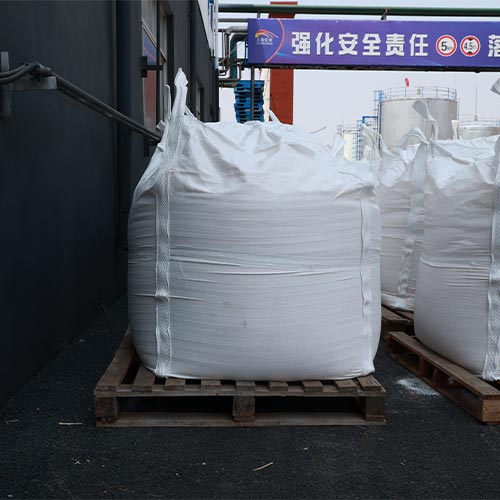Introduction
Neopentyl Glycol Application: Exploring Its Versatility in Various Industries.Neopentyl glycol (NPG) is a highly versatile compound that finds application across a multitude of industries. Its unique properties and chemical structure make it an essential ingredient in the production of various products. From automotive and construction to pharmaceuticals and cosmetics, neopentyl glycol plays a crucial role. In this article, we’ll delve into the diverse applications of neopentyl glycol and how its properties contribute to its widespread use.
Automotive Industry

Enhancing Coatings and Paints
Neopentyl glycol (NPG) stands as a cornerstone ingredient in the formulation of coatings and paints that possess exceptional quality and performance. This compound’s remarkable properties bring a multitude of benefits to the coatings and paints used in various industries, particularly the automotive sector.
The incorporation of neopentyl glycol into coatings and paints has led to a revolution in the world of aesthetics and protection. One of the standout features of NPG-based formulations is their ability to create an immaculate and glossy finish that adds a touch of elegance to any surface. This characteristic is particularly valued in the automotive industry, where the visual appeal of vehicles is of paramount importance.
However, the benefits of neopentyl glycol extend far beyond surface aesthetics. Its inherent solvent resistance grants coatings and paints a higher degree of resilience against environmental stressors and chemical exposure. This translates into an extended lifespan for coated surfaces, ensuring that they retain their vibrancy and protective properties for an extended period.
Impact on Engine Efficiency
Neopentyl glycol (NPG) isn’t just limited to enhancing the aesthetic and protective qualities of coatings and paints; its influence extends even further into the realm of engine efficiency within the automotive industry. The unique molecular structure of neopentyl glycol imparts properties that positively impact engine performance and fuel efficiency.
One of the primary areas where neopentyl glycol makes its mark is in lubricant additives. Engine components operate under extremely demanding conditions, with high temperatures, pressures, and friction levels. NPG’s chemical composition provides an innovative solution to these challenges by acting as a friction modifier and anti-wear agent. When added to lubricants, it forms a protective layer on metal surfaces, reducing friction and wear during engine operation.
Reducing friction is a critical factor in enhancing engine efficiency. Friction consumes a significant portion of the energy produced by the engine, leading to energy wastage and reduced fuel efficiency. By incorporating neopentyl glycol-based lubricant additives, manufacturers can effectively mitigate friction-related energy losses. This results in smoother engine operation, reduced wear and tear, and improved overall efficiency.
Construction Sector
Durability and Sustainability in Paints
Neopentyl glycol (NPG) continues to redefine the standards of durability and sustainability in the world of paints, particularly within the construction industry. The unique chemical attributes of NPG make it an essential ingredient in the formulation of environmentally friendly paints that offer enhanced longevity and reduced environmental impact.
The construction industry demands paints that not only provide aesthetic appeal but also stand the test of time in the face of harsh weather conditions, UV radiation, and other external factors. Neopentyl glycol addresses these requirements by contributing to the creation of highly durable coatings. The molecular structure of NPG plays a pivotal role in enhancing the adhesive properties of paints, enabling them to form a strong and lasting bond with various substrates.
This enhanced adhesion translates into paints that are less prone to peeling, cracking, or delamination, ensuring that structures maintain their appearance and protective qualities over extended periods. Neopentyl glycol’s resistance to weathering and chemical exposure further adds to the durability of these coatings, making them a valuable asset in the construction of buildings, bridges, and other infrastructure.
High-Performance Adhesives
Neopentyl glycol (NPG) emerges as a game-changer in the realm of high-performance adhesives, playing a pivotal role in enhancing the structural integrity and durability of bonded materials. The exceptional properties of NPG make it a preferred choice for adhesive formulations that are subjected to demanding conditions across various industries, particularly in construction and manufacturing.
At the heart of NPG’s effectiveness in high-performance adhesives lies its unique molecular structure, which contributes to the adhesive’s cohesive strength and long-lasting bond. When incorporated into adhesive formulations, neopentyl glycol enhances the ability of adhesives to create strong connections between different substrates, such as metal, wood, plastics, and composites. This strength is crucial for ensuring that bonded materials maintain their structural integrity under stress, vibrations, and external forces.
The durability of neopentyl glycol-based adhesives is another standout feature that sets them apart. These adhesives exhibit remarkable resistance to environmental factors, such as temperature fluctuations, moisture, and chemical exposure. This makes them ideal for applications that require adhesive bonds to withstand a wide range of conditions, from extreme cold to high humidity environments. The ability of NPG-based adhesives to retain their effectiveness even under these challenging circumstances is a testament to the compound’s exceptional stability and resilience.
Neopentyl Glycol Application: Pharmaceutical and Cosmetic Industries

Stability in Medicinal Formulations
Neopentyl glycol (NPG) assumes a crucial role in the realm of pharmaceuticals, particularly in ensuring the stability and efficacy of medicinal formulations. The exceptional chemical properties of NPG contribute to the creation of medications that maintain their potency over time, a critical factor in delivering safe and effective treatments to patients.
One of the primary challenges in pharmaceutical formulation is achieving controlled release of active ingredients. Neopentyl glycol’s stability comes into play here, as it enables the creation of formulations that release their contents in a controlled and consistent manner. This is essential for medications that require sustained therapeutic levels in the body, such as those used to manage chronic conditions. The stability of NPG-based formulations ensures that patients receive the appropriate dosage of medication over an extended period, enhancing treatment outcomes and patient compliance.
Furthermore, neopentyl glycol’s resistance to oxidation and degradation contributes to the longevity of pharmaceutical products. Medications are often exposed to various environmental factors, such as temperature fluctuations and light, which can compromise their effectiveness. NPG’s chemical stability acts as a protective shield, preserving the integrity of active ingredients and preventing their degradation. This is particularly important for medications with a longer shelf life, reducing the need for frequent replacements and minimizing waste.
Emollient and Texture Enhancer
Neopentyl glycol (NPG) takes on a remarkable role in the world of cosmetics as an emollient and texture enhancer, revolutionizing the way skincare and makeup products are formulated and experienced. The distinctive properties of NPG make it an invaluable ingredient that contributes to the luxurious feel, moisturization, and overall appeal of cosmetic products.
One of the primary attributes of neopentyl glycol is its exceptional emollient properties. Emollients are substances that help soften and smooth the skin by forming a protective barrier that locks in moisture. NPG’s ability to create such a barrier on the skin’s surface results in improved hydration, making it a sought-after ingredient in moisturizers, lotions, and creams. When applied, products containing NPG provide a soothing and comfortable sensation, leaving the skin feeling supple and well-nourished.
Moreover, neopentyl glycol’s compatibility with various formulations contributes to its role as a texture enhancer. The compound’s versatility allows cosmetic manufacturers to create products with varying consistencies, from lightweight serums to rich creams. This adaptability ensures that consumers can find products that suit their preferences and skin types, enhancing their overall skincare routine.
In makeup products, neopentyl glycol’s emollient properties offer a smooth and even application, resulting in a flawless finish. Foundations, concealers, and other makeup items that incorporate NPG glide effortlessly onto the skin, minimizing the appearance of fine lines and uneven texture. This creates a seamless canvas for makeup application, helping achieve a natural and polished look.
Conclusion
In conclusion, neopentyl glycol’s diverse applications across industries highlight its significance as a versatile compound. From improving the quality of automotive coatings and construction materials to enhancing pharmaceutical formulations and cosmetic products, NPG’s properties contribute to innovation and sustainability. Its role in various sectors showcases the synergy between science and industry, where a single compound can drive progress across multiple domains.
FAQs
- What is neopentyl glycol, and how is it produced?
Neopentyl glycol is a compound produced through the reaction of formaldehyde and isobutyraldehyde. It undergoes hydrogenation to yield the final product. - Can neopentyl glycol-based coatings be customized for specific colors?
Yes, NPG-based coatings can be tailored to a wide range of colors, making them suitable for various automotive and decorative applications. - Is neopentyl glycol safe for use in cosmetics?
Yes, neopentyl glycol is considered safe for cosmetic use, as it undergoes rigorous testing to ensure its safety and compatibility with human skin. - How does neopentyl glycol contribute to sustainability in the construction sector?
NPG’s role in producing durable and long-lasting coatings reduces the need for frequent repainting, thus conserving resources and reducing environmental impact.



